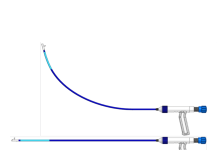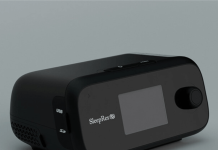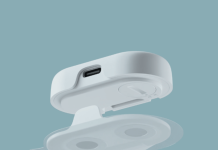Sentante today announced the completion of a first-of-its-kind remote stroke procedure in Scotland using its robotic platform. Specialist surgeons performed the procedures, guiding interventions from different hospitals in Florida and Dundee, Scotland. They performed full, end-to-end thrombectomies on perfused, non-living subjects with procedure-authentic pathology at the University of Dundee.
The company says the completed cases demonstrate its technology’s ability to save the lives and prognoses of patients suffering stroke episodes in remote settings. It could also improve critical care and outcomes for stroke patients using robotic accuracy and precision. The company also hopes to create a fully digital process with rich data to inform the next generation of specialists and endovascular robotics.
Related: Tulyp Medical emerges from stealth with perfusion tech
“For an ischaemic stroke, the difference between walking out of hospital and a lifetime of disability can be just two to three hours,” said Edvardas Satkauskas, co-founder and CEO of Sentante. “Today, patients are often transported long distances to reach one of a limited number of thrombectomy centres. With Sentante, the specialist comes to the patient over a secure network, and performs the entire procedure remotely—with the same tactile feel and control they have at the bedside.”
Dr. Ricardo Hanel, co-medical director of the Stroke & Cerebrovascular Center performed the transatlantic procedure. He operated from Baptist Medical Center (Jacksonville, Florida) on a unique, perfused human cadaver model located at Dundee University in Scotland.
From a remote hospital in Dundee, Dr. Iris Grunwald, an interventional neuroradiologist, performed a remote stroke thrombectomy in the same location.
“We were honored to be a test site for this groundbreaking use of remote robotic technology,” said Michael A. Mayo, president and CEO of Baptist Health. “Dr. Hanel and the team here at Baptist Health provide world-class neurosurgical interventions each day, and the potential for these life-saving procedures to be delivered in a timely manner can bring new sources of hope and healing to a countless number of patients.”
The procedure also looked at network performance and latency over the transatlantic link. Sentante partnered with Mischa Dohler, VP of Emerging Technologies at Ericsson to establish multi-path connectivity to maintain a stable, secure connection for mission-critical use.
Through the Nvidia Inception Program, the company also used state-of-the-art technologies purpose-built for developing healthcare robotics. These technologies support low-latency robotic applications and future developments for autonomous robotic systems and physical AI.
Sentante says it wants to find a way to close the gap in endovascular intervention through thrombectomy. Other companies, like Remedy Robotics, are also advancing robotic thrombectomy technologies. Penumbra, Surmodics and more also develop thrombectomy technologies. Meanwhile, companies like Microbot Medical and EndoQuest Robotics also develop endovascular robotic systems.






